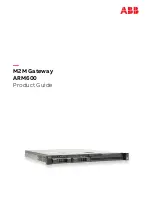
Reference Manual for the Model DG824M Wireless ADSL Modem Gateway
Wireless Networking Basics
D-3
Authentication and WEP
The absence of a physical connection between nodes makes the wireless links vulnerable to
eavesdropping and information theft. To provide a certain level of security, the IEEE 802.11
standard has defined two types of authentication methods, Open System and Shared Key. With
Open System authentication, a wireless PC can join any network and receive any messages that are
not encrypted. With Shared Key authentication, only those PCs that possess the correct
authentication key can join the network. By default, IEEE 802.11 wireless devices operate in an
Open System network.
Wired Equivalent Privacy (WEP) data encryption is used when the wireless devices are configured
to operate in Shared Key authentication mode. There are two shared key methods implemented in
most commercially available products, 64-bit and 128-bit WEP data encryption.
802.11b Authentication
The 802.11b standard defines several services that govern how two 802.11b devices communicate.
The following events must occur before an 802.11b Station can communicate with an Ethernet
network through an access point such as the one built in to the DG824M:
1.
Turn on the wireless station.
2.
The station listens for messages from any access points that are in range.
3.
The station finds a message from an access point that has a matching SSID.
4.
The station sends an authentication request to the access point.
5.
The access point authenticates the station.
6.
The station sends an association request to the access point.
7.
The access point associates with the station.
8.
The station can now communicate with the Ethernet network through the access point.
An access point must authenticate a station before the station can associate with the access point or
communicate with the network. The IEEE 802.11b standard defines two types of authentication:
Open System and Shared Key.
•
Open System Authentication
allows any device to join the network, assuming that the device
SSID matches the access point SSID. Alternatively, the device can use the “ANY” SSID
option to associate with any available Access Point within range, regardless of its SSID.
Содержание DG824M - 802.11b Wireless ADSL Modem
Страница 4: ...iv ...
Страница 21: ...Reference Manual for the Model DG824M Wireless ADSL Modem Gateway 2 8 Introduction ...
Страница 43: ...Reference Manual for the Model DG824M Wireless ADSL Modem Gateway 3 22 Connecting the Gateway to the Internet ...
Страница 69: ...Reference Manual for the Model DG824M Wireless ADSL Modem Gateway 5 16 Protecting Your Network ...
Страница 85: ...Reference Manual for the Model DG824M Wireless ADSL Modem Gateway 6 16 Managing Your Network ...
Страница 97: ...Reference Manual for the Model DG824M Wireless ADSL Modem Gateway 7 12 Advanced Configuration ...
Страница 107: ...Reference Manual for the Model DG824M Wireless ADSL Modem Gateway 8 10 Troubleshooting ...
Страница 125: ...Reference Manual for the Model DG824M Wireless ADSL Modem Gateway B 16 Network and Routing Basics ...
Страница 147: ...Reference Manual for the Model DG824M Wireless ADSL Modem Gateway C 22 Preparing Your Network ...














































